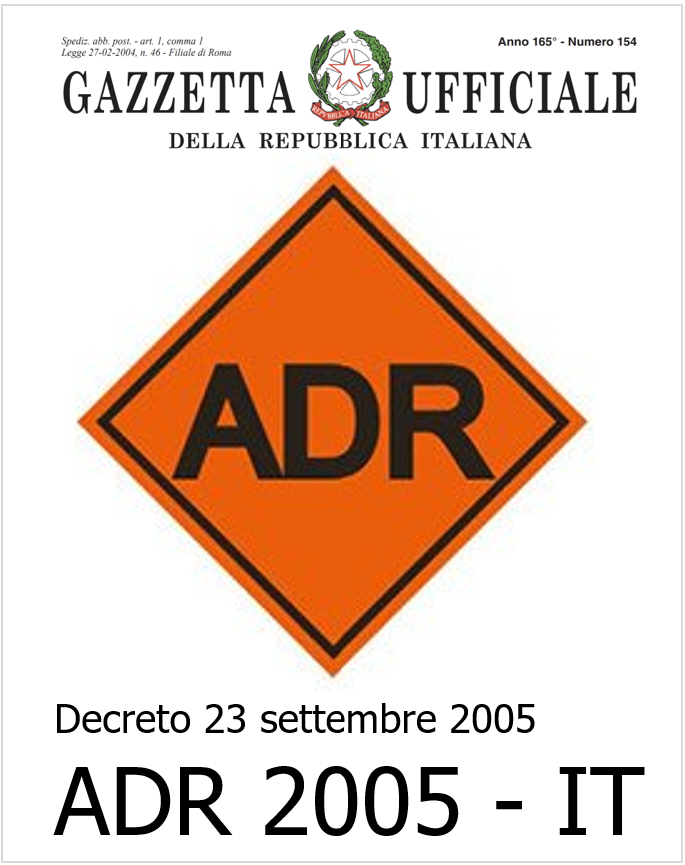Industry guidelines security Dangerous Goods
Industry Guidelines for the Security of the Transport of Dangerous Goods by Road
Update 01.11.2018
Following the events of September 11 2001 international legislators considered it necessary to develop and implement measures regarding security for the transport of goods by road, rail and inland waterways against possible terrorist risks. Furthermore recent events in Europe have reinforced the need for transport security regulations and vigilance.
Guidelines
Annex I
Technical options for securing temporary storage areas
Annex II
Management routines and operating practices for reducing the security risk
Annex III
Technical options for preventing the theft of, or interference with vehicles or loads during transport operations
Annex IV
Company security plan template 39
On the basis of relevant UN recommendations security provisions – as opposed to classic safety provisions – have been listed in a new ADR Chapter 1.10 and address all parties involved in the transport chain.
These measures took effect on January 1st, 2005 and had to be implemented at the end of the usual 6-months transition period on July 1st, 2005. Since then a limited number of amendments have been adopted and have been incorporated into an updated version of these Guidelines in 2010, aligning them to ADR 2011. In ADR 2013 the requirements for high consequence radioactive material were separated from these for high consequence substances of other classes and this was reflected in the 2013 version of these Guidelines, without affecting the guidance itself. The current revised Guidelines are in line with ADR 2017 and as subsequently amended. The aim of the regulations is the minimisation of the risk of misuse of dangerous goods for terrorist purposes through which persons, property or the environment might be endangered. Absolute protection cannot be achieved in the transport of dangerous goods.
Security measures should be an integral part of the safety and quality management system of every company involved with the transport of dangerous goods.
The general requirements of ADR Chapter 1.10 are mandatory. However, the specific ways they are addressed will depend upon the individual circumstances of the undertakings in a particular transport chain and their assessment of the risks and possible outcomes. For example, the measures taken by a company located in a residential area or adjacent to a strategic transport corridor could be very different to one located or operating in open country.
These Guidelines have been designed by industry to provide as comprehensive a range of technical and operational options as possible, from which users can select their optimum mix of options to achieve compliance with the regulatory requirements of Chapter 1.10.
These Guidelines are NOT a prescriptive list of every action a company must take to meet the regulations. Rather it sets out the likely outcomes of a range of possible interventions, whereby the individual comments can only be properly understood in the context of the relevant regulation texts.
These Guidelines are of a voluntary and indicative nature. Companies will need to decide individually how to apply these Guidelines according to their own judgement, as long as their actions are in conformity with the applicable law. In addition, they should be particularly attentive to comply with the legislation applying to data protection/privacy, when conducting actions in this field.
The regulations of chapter 1.10 do not apply to the carriage of limited quantities and quantities below the levels of subsection 1.1.3.6.3 ADR, except for a number of explosives of Class 1and except for Class 7 excepted packages of UN 2910 and 2911 if the activity level exceeds the A2 value.
It is important to note that in terms of security provisions 1.1.3.6.3 also applies to tank and bulk transport by road vehicles.
Chapter 1.10 is not applicable for certain goods which are listed in chapter 1.10 as high consequence dangerous goods (e.g. Potassium Cyanide, UN 1680, class 6.1, Packing group I) with a quantity limit of 0 Kg per packaging as the levels of subsection 1.1.3.6.3 take precedence over the quantity limits prescribed in chapter 1.10. (except for the substances as already described above).
The quantity limitations refer to each transport unit. This does not prevent the total annual quantity carried or handled by a company being in excess of this limit. This makes sense as any misuse would refer to an individual act of carriage.
If the quantity limits are exceeded, the regulations of 1.10 sections 1.10.1 and 1.10.2 apply. In the case of high consequence dangerous goods, section 1.10.3 also applies.
Section 1.10.3 introduces specific and more onerous special rules for dangerous goods with a higher danger potential, dealing not only with the general misuse and related dangers but specifically with the misuse for terrorist purposes and their potentially serious consequences.
European Commission
Revision
| Rev. | Date | Object | Author |
| 2005 | April 2005 | --- | EC |
| 2010 | August 2010 | --- | EC |
| 2013 | January 2013 | --- | EC |
| 2015 | January 2015 | ADR 2015 | EC |
| 2016 | December 2016 | ADR 2017 | EC |
Articoli correlati Merci Pericolose
ADR 2015 Track (file con i cambiamenti evidenziati)

ADR 2015 Track
ADR 2015 (file con i cambiamenti evidenziati)
ADR Accordo europeo relativo al trasporto internazionale di merci pericolose su strada Edizione 2015 (file con la traccia delle modifiche)...
Decreto 23 settembre 2005: ADR 2005 in Italiano

Decreto 23 settembre 2005 / ADR 2005 in Italiano GU / Ultima pubblicata MIT
ID 22179 | 04.07.2024 / ADR in Italiano GU
Pubblicazione della traduzione in lingua italiana del testo consolidato della vers...

































